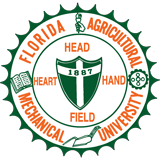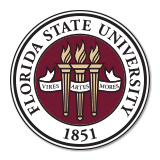A graduate student at the FAMU-FSU College of Engineering has earned a prestigious fellowship from the U.S. Department of Energy (DOE).

Virginia Phifer, a Florida State University doctoral student in mechanical engineering, is one of 62 graduate students across the nation selected for the DOE’s Office of Science Graduate Student Research (SCGSR) program.
DOE awards graduate students from a diverse pool of applicants across the nation to collaborate with DOE scientists at DOE laboratories. Phifer will have the opportunity to work at the Lawrence Berkeley National Laboratory (LBNL) with scientist Maxim Marchevsky on superconductor performance cable technology.
“The anticipation of working with Dr. Marchevsky is very exciting,” Phifer said. “He has developed a technique that I will be able to adapt to use in my research, it’s relevance will be especially beneficial to what I am working on.”
The SCGSR program plays a role in sustaining a pipeline of researchers that have the scientific skills to succeed in the technology-based workforce. Phifer was awarded a six-month fellowship in the program and will receive supplemental funding for living and expenses and travel, beginning in January.
Lance Cooley is Phifer’s research advisor and a professor in mechanical engineering. He is also the Director of the Applied Superconductivity Center at the National High-Magnetic Field Laboratory (MagLab), where Phifer is researching superconductivity.
“Virginia has developed into a top graduate student,” Cooley said. “Her collaboration with Dr. Marchevsky could lead to breakthroughs in our understanding of superconducting cables and ultimately benefit society in power production, electricity supply, green transportation, medical devices, and tools for science.”
Phifer’s research focuses on REBCO, a material used with superconducting magnets. REBCO is a family of compounds known for exhibiting high-temperature superconductivity. The conductor itself looks like a metal tape and only displays superconducting properties when cooled below 92 degrees kelvin. There are known performance issues with REBCO, and Phifer is working to improve their function.
Defects in REBCO can cause the cable to heat up and keep current from passing through and can potentially ruin the magnet. Scientists are working to solve this problem with new cable designs using this conductor. Phifer wants to know if these designs are viable.
“I am looking at REBCO’s ability to bypass areas of the tape where defects form, “Phifer said. “Normally when defects form you have to use an invasive technique to find it. We are using a new sensor technique to find defects in a non-invasive method.”
Using non-invasive techniques to find defects will save money and time, according to the researchers.
“These cables are expensive, and anything invasive or destructive has risks,” Cooley said.
Phifer is using small magnetic sensors that produce a voltage in response to changes in the magnetic field. She takes the sensors and moves them along the entire length of the cable. When a defect shows up, there is a change in the magnetic field pattern, and she can detect it.
“In the new designs, scientists are taking REBCO cables and winding them around a copper core, in several layers with the idea that current will bypass any areas that may have defects,” Phifer said. “I want to know if this is possible and if so, how many defects can be bypassed before the cable has performance issues.”
Her findings could be significant to the design of future high-field magnets.
The SCGSR program helps graduate students advance their doctoral theses and gives them access to the best resources and capabilities that DOE laboratories have. The research projects proposed by new awardees demonstrate a strong alignment with the priority mission areas of the DOE Office of Science and the need for workforce development.
To learn more about the SCGSR, visit https://science.osti.gov/wdts/scgsr
To learn more about the ASC-MagLab, visit https://nationalmaglab.org/magnet-development/applied-superconductivity-center

